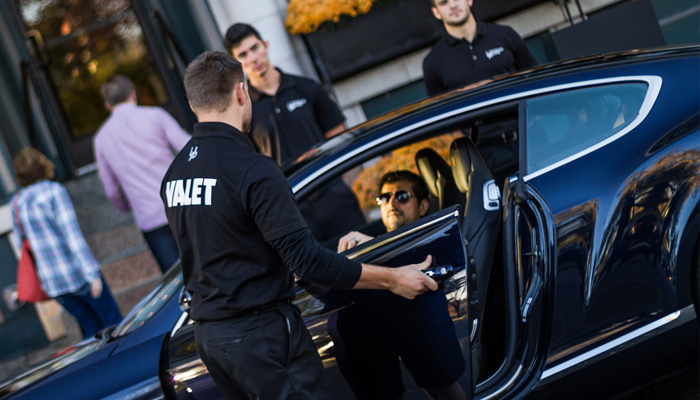- in Parking , Reverse by safetyparkvalet
Reverse Parallel Parking

It is almost inevitable that once you start driving, you will need to park. Most people drive in and back out. However, once you master the art of backing in, you will find it is much more convenient to be able to pull right out. This is a learned skill, and will need a lot of practice off-site in a remote location. Once you have practiced, and learned the skill, you will be able to park almost anywhere.

REVERSE
Drive your car past the open spot– As you are doing this, turn your turn signal on so that cars behind you know to drive around. The open spot should always be on your right. Never park crossing over to the other side of the street. Your bumper should cover half of the end of the parking space.
- Make sure to look out for pedestrians before you begin backing up.
Put your car in reverse– Turn your wheel all the way to the right before you begin moving the car. Press on the gas gently as your car begins to turn. Because your wheel is all the way to the right, your car will move left when it is in reverse.
- Continue to look in your mirrors and check for pedestrians and the edges of the cars surrounding the parking space.
- Turn your car to the left until your car is parallel with the parking space, equidistant on both sides. After it is parallel, press on the brakes and hold your car steady. Turn your wheel so that your tires are now straight.
- Take it slow. Continuously check the mirrors, and back out, if you are getting too close to one of the cars on the sides.
Adjust your car- Switch between forward and reverse, moving a few inches at a time. Turn your wheel either way. You want the space on both sides of your car to be even. Once your car is safely backed into the space, put your car into park and turn off the engine.
Get out of your car– Open the driver’s door slightly to see whether there is enough room to get out. You may have to hold the door only slightly open as you get out. Make sure not to sling the door open, otherwise you could damage the car behind you. Once you are out, lock your car and you are good to go.
Exit your parking space– Turn your car on and put it in forward. Go forward slightly as you press on the accelerator. As you begin to creep out of your parking space, tilt your head forward to make sure there are no cars or pedestrians coming by. Continue out of the space straight until your bumper is fully past the cars on either side.
- Turn your wheel whatever direction you want to go and press on the accelerator.
PARALLEL
Find an empty parking spot- Make sure that the space is big enough to hold your car. It will have to be at least 25% longer than the length of your car. You will also want to check for fire hydrants, yellow edges on sidewalks, or handicap signs as to why the space might be left empty.
Turn your blinker on to the right- This will allow other cars behind you to drive around. Pull up next to the car in front of the empty spot. You want to be as close to the other car as possible, not more than 12 inches (30.5 cm) away. Ensure that the front of your car is the same distance from the car next to you as the back of your car (don’t slant your car at an angle). Your bumper should line up directly parallel to the car next to you
Put your car in reverse- Start backing up slowly until your head is parallel with the wheel of the car to your right. Press on the brake and hold your car steady. Turn your steering wheel as far as it will go clockwise. Look over your left shoulder as far as you can and start backing up again. Keep backing up until you can see the front wheel of the car behind you in your right mirror.
- Your car should now be positioned at a 45 degree angle into the parking space. Press on your brake and steady your car.
Turn your wheel all the way counter-clockwise– Do this while maintaining your foot on the brake. When it has moved as far as it will go, begin backing up again slowly. Glance from front to back to ensure that you are not going to bump the car in front or the car in back.
Continue to back up until you are parked- If you either bump into the curb, or get too close to the car in back of you, turn the top of the wheel to the right again and pull forward slowly. Steer your car into the proper position.
Exit your vehicle- Leave space in front and behind to allow yourself and the other people to get out of the parking spots. If you park very far forward or back and another car parks very close to you, you will be too tight to get out of your spot, so don’t forget to leave that space. If done correctly, you should leave no more than 12 inches from the curb to your car.
